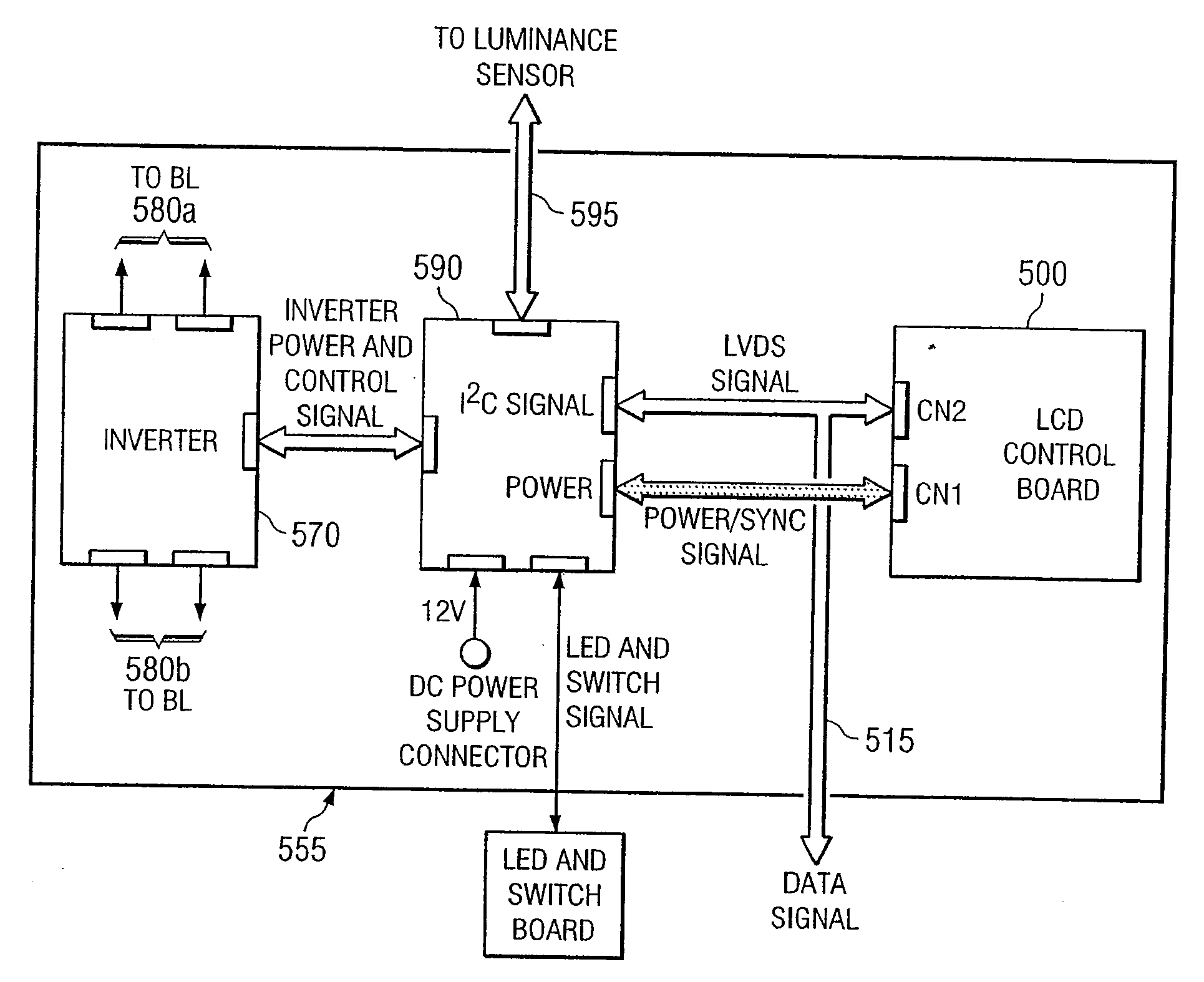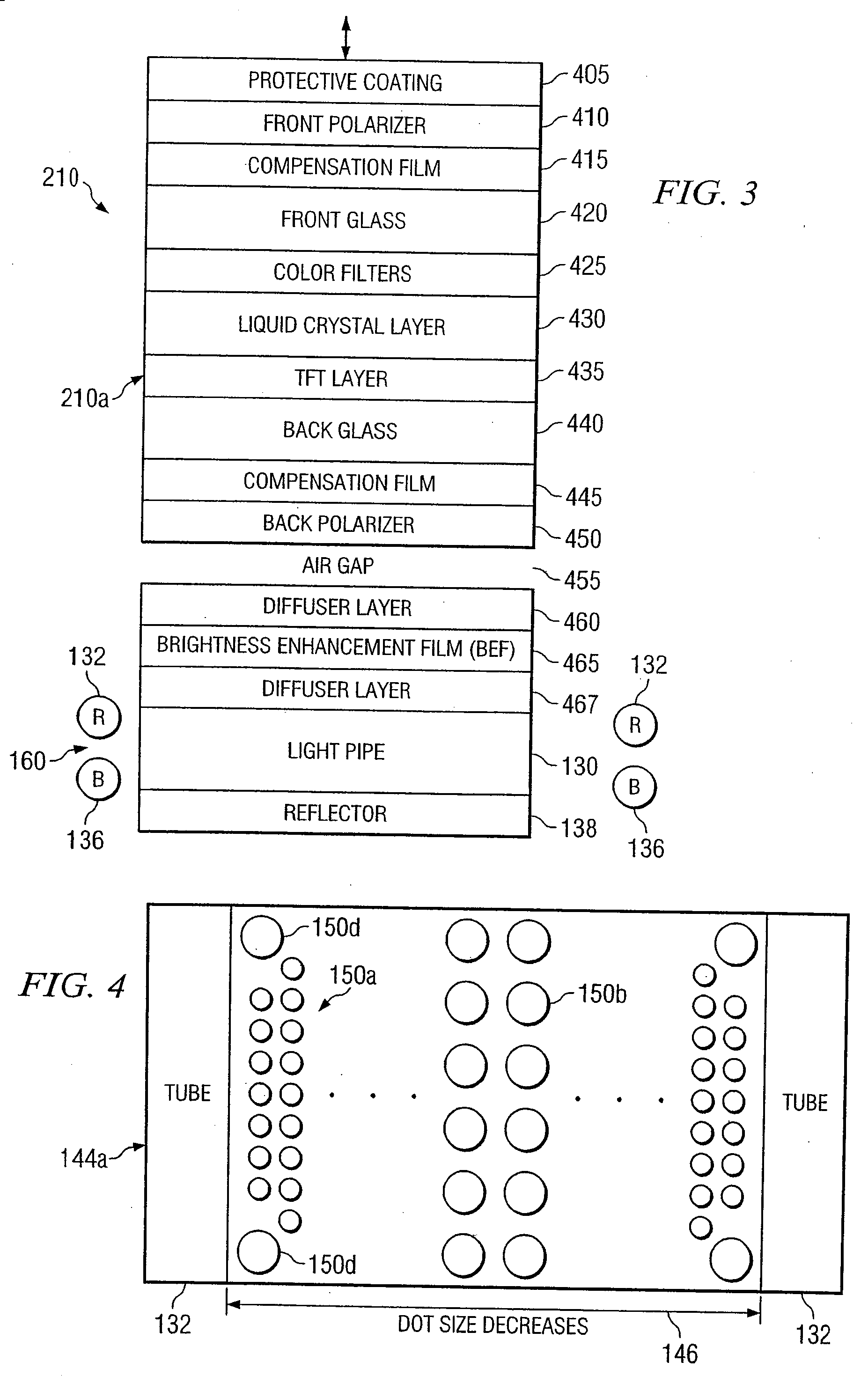System and Method for Providing a Wide Aspect Ratio Flat Panel Display Monitor Independent White-Balance Adjustment and Gamma Correction Capabilities
a flat panel display, wide aspect ratio technology, applied in the field of display devices, can solve the problems of reducing the dynamic gray scale range of some or all of the rgb colors, the overall color gamut of the display, and the loss of the dynamic gray scale range and color gamut of the lcds, so as to reduce the scalloping effect and other visual artifacts, reduce the bandwidth, and reduce the effect of low cost luminan
- Summary
- Abstract
- Description
- Claims
- Application Information
AI Technical Summary
Benefits of technology
Problems solved by technology
Method used
Image
Examples
Embodiment Construction
[0039] Reference will now be made in detail to the present embodiments of the invention, examples of which are illustrated in the accompanying drawings. While the invention will be described in conjunction with the present embodiments, it will be understood that they are not intended to limit the invention to these embodiments. On the contrary, the invention is intended to cover alternatives, modifications and equivalents, which may be included within the spirit and scope of the invention as defined by the appended claims. Furthermore, in the following description, for purposes of explanation, numerous specific details are set forth in order to provide a thorough understanding of the present invention. It will be obvious, however, to one skilled in the art, upon reading this disclosure, that the present invention may be practiced without these specific details. In other instances, well-known structures and devices are not described in detail in order to avoid obscuring aspects of th...
PUM
| Property | Measurement | Unit |
|---|---|---|
| aspect ratio | aaaaa | aaaaa |
| distance | aaaaa | aaaaa |
| color temperature | aaaaa | aaaaa |
Abstract
Description
Claims
Application Information
 Login to View More
Login to View More - R&D
- Intellectual Property
- Life Sciences
- Materials
- Tech Scout
- Unparalleled Data Quality
- Higher Quality Content
- 60% Fewer Hallucinations
Browse by: Latest US Patents, China's latest patents, Technical Efficacy Thesaurus, Application Domain, Technology Topic, Popular Technical Reports.
© 2025 PatSnap. All rights reserved.Legal|Privacy policy|Modern Slavery Act Transparency Statement|Sitemap|About US| Contact US: help@patsnap.com



